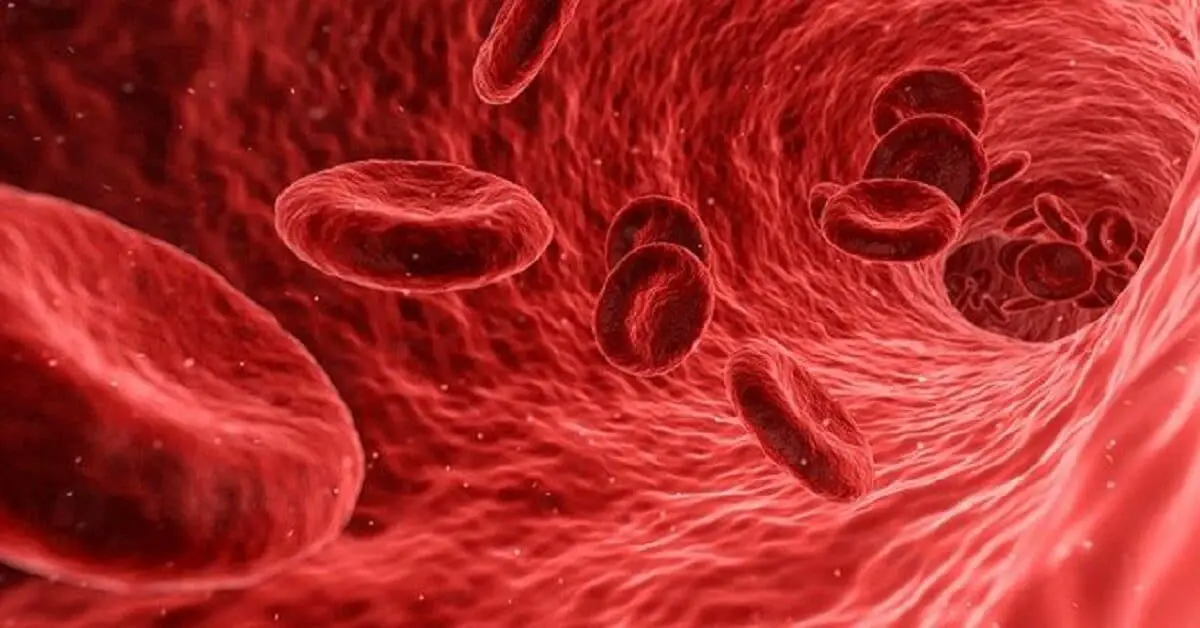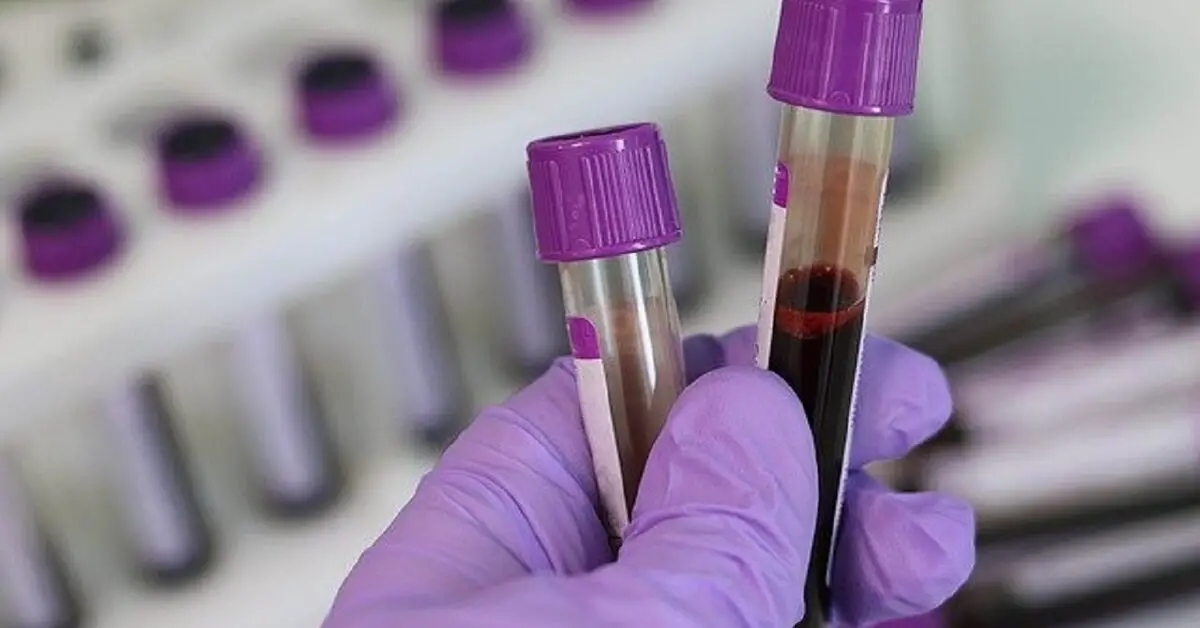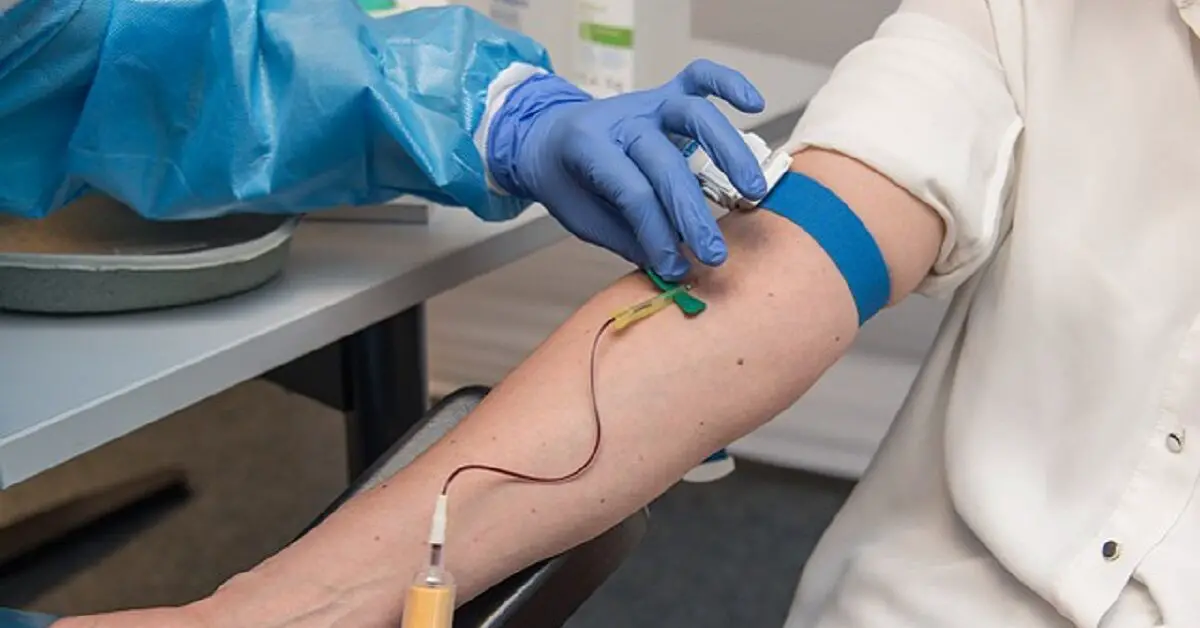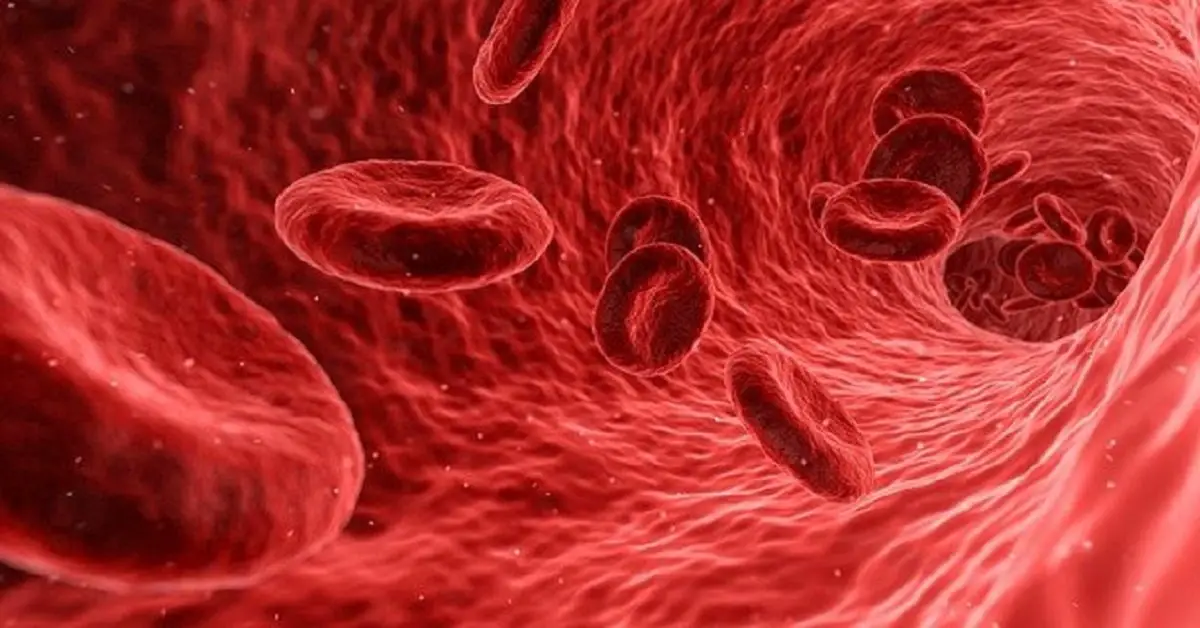
Low iron symptoms occur when you are not getting enough of the essential mineral to make hemoglobin, a protein in red blood cells (erythrocytes) that binds with oxygen during transportation from the lungs to various body tissues and organs.
When left untreated, iron deficiency leads to anemia.
Iron deficiency anemia is when you don’t have enough hemoglobin-carrying red blood cells (erythrocytes) to deliver oxygen to target tissues and organs (Miller, 2013) because your diet is chronically (persistently) lacking in iron.
Anemia is a global health problem. An estimated 42% of children less than 5 years and 40% of pregnant women worldwide are anemic, according to the World Health Organization. A third of the world’s population is affected by anemia, and more than half the cases are due to iron deficiency, Lopez et al. reported.
Iron deficiency is the most common single nutritional deficiency worldwide. More than 2 billion people are affected, according to Viteri. About 10% of American children and 17% of premenopausal women are iron-deficient, a recent study found.
Other causes of anemia include folate and vitamin B12 deficiency. In older adults, impaired absorption of B12 is associated with pernicious anemia.
Contents:
Iron deficiency without anemia
31 symptoms of iron deficiency you need to know
–13 less common, unusual, or weird symptoms of low iron
–18 common signs and symptoms of low iron
Complications of iron deficiency
How much iron should I take per day?
Iron deficiency without anemia

Anemia, characterized by low hemoglobin levels (≤ 130 g/L in males and ≤120 g/L in females), is a late manifestation of iron deficiency, according to Soppi.
People with early-stage and mild-to-moderate deficiency may show no signs or symptoms of the condition.
Soppi explained in a clinical case report, Iron deficiency without anemia — a clinical challenge, that you can have low iron levels and manifest clinical symptoms of iron deficiency anemia while having a normal full blood count (FBC).
Umbreit also noted that anemia that is detectable through blood count is a late manifestation of iron deficiency. The author added that symptoms of deficiency may manifest before anemia is detectable through blood count.
[Note: A full blood count (FBC), also known as a complete blood count (CBC), usually includes a count of the number and average size of your red blood cells, the amount of hemoglobin in your red blood cells, number of white blood cells (that fight infection), platelets (cells that help blood clot formation) per milliliter of blood, and hematocrit (the proportion of your blood consisting of red blood cells).]
The authors explained that in cases where a person shows low iron symptoms but normal hemoglobin and blood count, ferritin (a blood protein that stores iron) concentration is the most reliable way of identifying iron deficiency.
Lopez et al. also explained that measurements of serum ferritin, and related indices, are more reliable than blood count for detecting iron deficiency.
Individuals with iron deficiency but normal blood count may be diagnosed through test results that show low ferritin levels (<30 μg/L). But in some cases, the picture is complicated by ferritin levels that may appear normal or near-normal.
Bone marrow iron staining is another diagnostic method that can be used to identify people with iron deficiency anemia when blood count and ferritin levels appear normal.
31 symptoms of iron deficiency you need to know

Iron deficiency anemia can lead to serious health complications. However, if you are informed about the signs and symptoms that may manifest before anemia sets in, then you may be able to act before you develop health complications.
In a previous article, we listed 7 low vitamin D symptoms and signs of deficiency.
In this article, we list 31 low iron symptoms, including less common and unusual symptoms that health professionals have identified. But keep in mind that while many with iron deficiency show clinical signs and symptoms, there are cases of asymptomatic deficiency that may go undiagnosed for a long time.
Here are 31 signs and symptoms that may indicate you have low iron levels.
[Note: Once again, we would like to emphasize to our readers that while everyone should take an interest in the quality of their diet, we should avoid falling into the trap of developing orthorexia–an obsessive preoccupation with the nutritional quality of diet. Learn more about the 11 warning signs of orthorexia here.]
13 less common, unusual, or weird symptoms of low iron

Some unusual, rare, or weird signs and symptoms of iron deficiency include compulsive cravings (such as pica) and psychiatric disorders:
- Desiderosmia or olfactory craving: Some people with iron deficiency crave certain types of odor. The compulsively sniff rubbing alcohol, exhaust gasoline, and menthol.
- Blue sclera is a common sign of iron deficiency (ID) However many people with ID are unaware of the diagnostic signficance of the sign (learn more about blue sclera and ID here).
- Tinnitus: Iron deficiency symptoms may include ringing, buzzing, hissing, or whooshing noise in the ears. The noise may be continuous (non-pulsatile) or rhythmical (pulsatile).
- Hapticophagia (cravings associated with chewing): Scheckel et al. reported strange “tactile cravings” associated with chewing in multiple female patients. The patients craved several items, such as gum, hard candies, crackers, dry oats, pickles, ginseng, chips, popcorn, knitting rope, and sawdust. Some patients reported experiencing persistent cravings that led to prolonged chewing and jaw pain.
- Allotriophagia (Pica): Craving for non-food or non-nutritive items is sometimes associated with iron deficiency. Pica may manifest as a compulsive desire to eat things such as ice (pagophagia), dried paint, chalk, pieces of dirt, paper, rubbing alcohol swabs, baking soda, and detergent. (Read about 13 subtypes of pica here).
- Pruritus (itching): Generalized itching may occur in iron deficiency. Lewiecki and Rahm reported pruritus as a manifestation of iron deficiency in a 62-year-old woman.
- Peripheral neuropathy: Symptoms of peripheral neuropathy may occur in children with iron deficiency anemia. Typical symptoms of peripheral neuropathy include uncomfortable sensations, such as tingling, pins and needles, and numbness in the arms and legs. The researchers found that iron supplementation improved the symptoms.
- Patterned hair loss: Iron deficiency may play a role in patterned hair loss among premenopausal women. According to Trost et al., although the evidence remains uncertain, some studies suggest that iron deficiency may be linked with several types of hair loss.
- Damaged skin: Iron plays a role in maintaining skin condition and healing damaged skin. Iron deficiency also predisposes to skin conditions and infections, such as dry, brittle skin and hair, impetigo, boils, and candidiasis.
- Dysphagia (difficulty swallowing and feeling a lump in the throat): Dysphagia is sometimes associated with iron deficiency anemia and esophageal webbing in a rare condition called Plummer-Vinson syndrome. Goel et al. concluded that supplementation improved the symptoms.
- Psychiatric disorders: Studies have linked iron deficiency with mental health issues, including mood changes, depression, and anxiety. Some studies found that iron deficiency anemia (IDA) was associated with an increased risk of psychiatric disorders. Anther study concluded that IDA increased the risk of psychiatric disorders, autism spectrum disorder, attention deficit hyperactivity disorder, mood disorders, and developmental disorders.
- Periorbital hyperpigmentation (POH; dark circles around the eyes): A study found that significant number of patients with IDA had with dark circles around their eyes. However, dark circles may be due to exhaustion, poor sleep or other unhealthy changes in sleep pattern. Dark circles could also be due to decreased supply of blood to the tissues surrounding the eye.
- Decreased cognitive function: Iron deficiency may affect brain health, cognition, and social behavior. Gattas et al. reported that low hemoglobin may adversely affect cognitive processes. It may be a factor in age-related hearing loss (Scheiffer et al., 2017), Alzheimer’s, and dementia (hearing loss is associated with dementia in older adults).
- Some people with IDA may complain that their food tastes different or strange.
18 common signs and symptoms of low iron

Common signs and symptoms of low iron are often non-specific ones such as fatigue and dyspnea, according to Warner et al.
Below is a list of some common signs and symptoms of iron deficiency, including non-specific ones, according to the National Heart, Lung, and Blood Institute (NHLBI).
- Pallor or pale skin due to shortage of oxygen-transporting red blood cells.
- Unusual paleness of the tissues under the lower eyelids. Physicians will often check for this sign in young children by pulling down the lower eyelids to reveal the tissues below the eye. Normal tissues should have a vibrant red color.
- Brittle nails and spoon-shaped fingernails (koilonychia).
- Painful sores and cracks in the sides or corners of the mouth (angular cheilitis).
- Poor appetite, especially in infants and children.
- Atrophic glossitis is a non-specific sign of iron deficiency. It is characterized by a sore and swollen tongue lacking normal papillae (little bumps) on the upper (dorsal) surface. The sign also manifests in other types of anemia, such as pernicious anemia (due to vitamin B12 deficiency).
- Difficulty concentrating and poor performance at work.
- Chest pain.
- Muscle and joint aches and pain.
- Shortness of breath or gasping for breath (dyspnea).
- Cold extremities, specifically in the hands and feet.
- Dizziness and lightheadedness.
- Sleep disturbances.
- Persistent and extreme fatigue, weakness, or tiredness are common symptoms of iron deficiency. Patients don’t have the energy to do their normal daily activities. It often leads to a decline in productivity at work.
- Headache is another non-specific sign of iron deficiency because there are myriads of other conditions that could cause headaches.
- Irregular, fast heartbeat or palpitations are common symptoms of iron deficiency.
- Restless leg syndrome manifests as a pattern of unintended fidgety movements of the limbs. It often occurs in the middle of the night. The patient fidgets a lot and appears unable to stop. They are often unable to get a good night’s rest as a result.
- Frequent infections.
Complications of iron deficiency
Complications that could occur if iron deficiency anemia is not promptly treated include:
- Heart complications: Undiagnosed or untreated iron deficiency anemia (IDA) can lead to serious heart conditions. When your blood is low in hemoglobin, the heart is forced to work harder to supply oxygen to the body tissues and organs. The excess workload on the heart could lead to heart enlargement and failure.
- Infections: IDA increases the risk of serious infections due to compromised immunity.
- Development delays in children: Untreated IDA may lead to slow growth or stunting in children. It may also cause motor and cognitive developmental delays.
- Pregnancy complications: Iron deficiency anemia can lead to pregnancy complications, such as preterm deliveries or underweight babies that fail to thrive. Doctors often prescribe iron supplementation for pregnant women at risk of iron deficiency.
Iron deficiency risk factors

People more likely to have iron deficiency include those who have experienced repeated or frequent incidents of significant blood loss. Such blood loss could occur through heavy menstrual bleeding (menorrhagia).
According to Umbreit et al., 10%-20% of menstruating women have iron deficiency, and some are anemic. Millions of people worldwide, including adolescent girls and women of childbearing age, have iron deficiency anemia but don’t know.
“I treated a teenage girl with menorrhagia [heavy menstrual bleeding] who was severely iron deficient,” CARE healthy living Medical Advisor, Dr. Moyo Adeyemi, FRCPC, explained. “Apart from being pale, she was asymptomatic.”
“Oral therapy works in almost all cases. I have only had to give IV iron therapy once that I can remember. I cannot remember having to tranfuse a child with blood because of iron deficiency,” she added.
Iron deficiency may also occur in blood donors, accident victims, and people who have undergone surgery.
Children and adults on an inadequate or restricted diet are also susceptible to anemia.
“I have seen lots of cases of iron deficiency in Northern Manitoba, usually due to high intake of milk products and very little iron-containing food,” Dr. Adeyemi said. “Iron absorption is not good with milk, and many children present obese but anemic. A few present with pica.”
If you are not getting enough iron from your diet due to a restricted vegetarian diet deficient in iron and folic acid, you may develop iron deficiency.
Although studies suggest that vegetarians — especially premenopausal vegetarian women — have a higher prevalence of iron deficiency, Saunders et al. concluded that vegetarians who eat a varied and balanced diet that includes legumes (peas and beans), nuts, seeds, green leafy vegetables, and whole grains, are not at greater risk of iron deficiency than meat-eaters.
What causes low iron?

Besides a diet low in iron, various conditions of the digestive system may cause deficiency. Some people have difficulty absorbing dietary iron due to conditions, such as helicobacter pylori infection, celiac disease, and inflammatory bowel diseases, according to NHLBI.
People who have undergone gastrointestinal tract (GIT) surgeries, such as gastrectomy or gastric bypass surgery, may also develop iron deficiency.
Increased need for iron without a matching increase in dietary intake could predispose to deficiency. That explains why deficiency of the essential mineral is a common maternal and child health issue. Women of childbearing age, pregnant women, women who have gone through multiple pregnancies (multigravida), and young children up to 5 years are at a high risk of deficiency due to increased need.
People involved in high-performance sports, including athletics and bodybuilding, are also susceptible to iron deficiency. Studies suggest that intensive physical training depletes the body’s iron stores.
Patients with chronic illnesses such as kidney disease and heart failure may also develop anemia.
Ulcers, colon cancer, and other conditions that cause bleeding from the digestive tract may cause iron deficiency. Nonsteroidal anti-inflammatory drugs (NSAIDs) — high-dose aspirin, ibuprofen, naproxen, diclofenac, celecoxib, mefenamic acid, and indomethacin — may cause gastrointestinal bleeding that leads to deficiency.
Individuals with various inherited blood disorders, including sickle cell anemia, and metabolic disorders, such as G6PD deficiency, are also susceptible to iron deficiency anemia (IDA). People with rare genetic conditions, including hemorrhagic telangiectasia and TMRPSS6 gene mutation in which patients produce excessive amounts of the iron-absorption-blocking hormone hepcidin, are also predisposed to developing IDA.
People on blood thinners, such as aspirin, warfarin, heparin, and apixaban, may also develop IDA.
Some studies also suggest that tobacco smokers tend to have lower hemoglobin levels than non-smokers.
What foods are high in iron?
Foods high in iron include:
- Legumes: Beans, peas, and lentils.
- Fruits: Dates, figs, and raisins.
- Meats and poultry: Beef, mutton, pork, veal, chicken, and organ meats.
- Seafood: Sardines, haddock, mackerel, tuna, oysters, and scallops.
- Vegetables: Dark leafy green vegetables, such as kale, and spinach.
- Nuts and seeds: Almonds, cashews, pistachios, pumpkin seeds, sesame seeds, and flax seeds.
- Herbs and spices, such as basil leaves, coriander leaves, bay leaves, thyme and spearmint are also rich in iron
How much iron should I take per day?

According to the National Institutes of Health (NIH), the recommended daily allowances (RDAs) of iron for nonvegetarians varies with age and gender.
- Birth to 6 months: 0.27 mg
- Infants 7–12 months: 11 mg
- Children 1–3 years: 7 mg
- Children 4–8 years: 10 mg
- Children 9–13 years: 8 mg
- Teen boys 14–18 years: 11 mg
- Teen girls 14–18 years: 15 mg
- Adult men 19–50 years: 8 mg
- Adult women 19–50 years: 18 mg
- Adults 51 years and older: 8 mg
- Pregnant teens: 27 mg
- Pregnant women: 27 mg
- Breastfeeding teens: 10 mg
- Breastfeeding women: 9 mg
Source: NIH
Vegetarians require a higher RDA (1.8 times higher) because the nonheme iron in plant-based diets is less available than the heme iron in meat and animal food products.
A note to our readers
If you believe you have low iron symptoms and are iron deficient, we advise you to consult your doctor. Although this article is based on peer-reviewed research and information from authoritative academic journals, trusted public agencies, and professional groups, it is meant only for informational purposes and not as a substitute for professional healthcare advice and service.
Although many non-specific symptoms, such as pains, sores, aches, fatigue, dyspnea, and sleep disturbance, could be due to iron deficiency, they could also be due to other conditions. Such conditions include vitamin D or B12 deficiency, chronic fatigue syndrome, fibromyalgia, and burnout, according to Soppi.
High doses of iron may cause stomach upset, constipation, abdominal pain, nausea, vomiting, and fainting, according to the NIH. Higher doses can interfere with zinc absorption. Very high doses may lead to failure of vital organs, convulsions, loss of consciousness, and even death.
We, therefore, do not want you to self-medicate because iron is toxic at high supplementation doses. Only a qualified healthcare professional can determine whether the signs and symptoms you believe you have are, in fact, due to iron deficiency.

